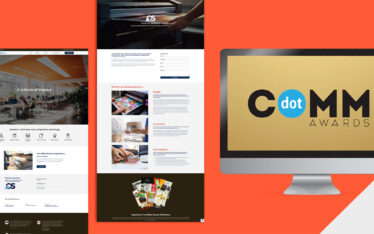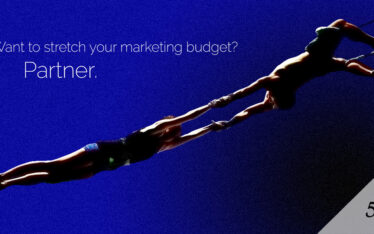
Social media marketing is a fast-moving target. As soon as you’ve got something figured out, whether it’s a platform’s algorithm, a paid media budget, or strategic hashtags, everything changes. Moving at the speed of social requires staying on top all the changes, tools and innovations constantly hitting the market. That’s tough to do for organizations that are already focused on staying ahead of trends in their own industries. Not focusing on social isn’t an option though, considering that 96% of business leaders agree that companies must continue to invest in social media marketing to be successful. And 93% say social media data and insights will be a primary source of business intelligence for their company.
There are several common social media marketing myths that still prevail among companies of all sizes and across all industries. Here, we debunk the top eight misconceptions with the latest facts and statistics to help you improve your social media marketing strategy for the second half of the year.
Social Media Marketing Myth #1: A/B testing is the only way to get insights to optimize your social ads.
Fact: According to the 2023 State of Social Media, 90% of leaders agree their company’s success will depend on how effectively it can use social media data and insights to inform business strategy. So, a/b testing your social media is definitely a smart play. However, it’s not the only way, nor is it the most in-depth way to get ad insights. Multivariant testing provides deeper insights because it allows you to optimize multiple factors at once. Both tests are relevant, so it’s important to know when to use each to your advantage.
If you have a smaller audience and need to see results fast, use a traditional a/b test. Because this format tests just one variable, it’s easier to track results. The downside of an a/b test is that the results tend to be hyper-focused so it’s more difficult to generalize or scale.
Multivariant testing requires a lot more traffic to get meaningful results. Instead of two versions of a single ad, you can create multiple variants of the same ad (headline, color, CTA, link, etc.) to identify which combination of elements generates the most powerful audience response. The results tend to be significant and can help you redesign your ads, collect valuable data on prospects, and scale your campaign performance.
Social Media Marketing Myth #2: Post copy for a LinkedIn ad should always be short enough that it doesn’t truncate.
Fact: Conventional wisdom says that forcing your audience to click more than once lowers the CTR when it counts (on the link itself). However, what we’ve discovered recently is that providing more details in post copy can actually increase engagement on your ads. It really does depend on your audience; in this case, how well known your company and its services are to your target audience. If your focus is on brand awareness and brand recognition, your target audience may very well require more education about your brand and your services. But highly targeted ads could require less copy; if you’re targeting a specific audience where you already enjoy strong brand recognition, less copy will likely earn stronger results. This is why testing is so important. Different audience demographics will react differently, and remember that audiences evolve and change over time, so continuing to test is a smart strategy. If your audience is problem aware and even solution aware, you may need to educate them on being brand aware.
Social Media Marketing Myth #3: Gating content is the only way to generate leads and show a true ROI for social media content.
Fact: Five years ago, a content marketing strategy that didn’t include gated content was a fail. Today, gating content no longer earns the same results, and rightly so. The proliferation of content has seen to that. Gating your content keeps it hidden from search engines, and it turns most prospects away. Ungating content still has the potential to generate leads. You can offer a PDF download in exchange for an email address, or add links within your content that connect interested prospects directly to the right expert when and where they’re ready. And remember – just because you get “leads” who download your content doesn’t mean they are all sales qualified leads. They could be writers like me looking for statistics or research, students writing a paper for school, or competitors on a reconnaissance mission. Ungating high quality content can actually improve your quality of leads – and we know that quality is better than quantity. Allowing prospects to download for free (i.e. no gate) doesn’t mean you can’t pursue leads. In fact, it’s better to include calls to action within your content that allow prospects to learn more about a specific topic or even reach out to a qualified rep from your company about a specific topic when, where, and how they choose. Customers want to be in control. In this way, you’re letting them decide if, when, where, and how to take that next step. Use a content strategy to provide ungated information that then drives to deeper dive content behind a short gate. This can help you qualify prospects who are interested in multiple assets or topics.
Social Media Marketing Myth #4: Moving your social media followers through the path to purchase from brand awareness to consideration to purchase is the best way to convert them into customers.
Fact: Buyers will not automatically move from top to mid to bottom of funnel just because your content’s call to action tells them to. Buyers are in the driver’s seat and they’ll decide if and when they’re ready to make a purchase. Sure, you can nurture them along that path, but you won’t convince them to buy before they’re ready. And if you do, you might be looking at a one-time sale rather than a long-term relationship based on trust. The best way to turn your followers into customers is to consistently provide them with relevant, timely insights and information. B2B companies can also amplify their top executives’ voices on social media to create a halo effect that builds brand credibility and trust.
Social Media Marketing Myth #5: Vanity Metrics are not good indicators of performance.
Fact: Vanity metrics include likes, followers, reactions, comments, shares, and saves. All of these are important not just as an Engagement total taken together, but each individually means something to your brand. The number of followers your company page has can be directly tied to the potential number of impressions each post receives. Every social media platform is different in that a comment on Facebook might not be as important as a comment on LinkedIn. The key is to understand what performance means to your brand. If your goal is to build community among your social media audience, engagement rate and follower growth rate are good indicators. If brand building is key, look for shares, saves, and reactions. Assign a dollar value to each metric: Perhaps a reaction is worth $1 and a lead is worth $500. That means it will take 500 reactions to create one lead. You can look at this in terms of earned media value as well. The potential reach of an impression on LinkedIn translates to about $30. On Facebook, $40, and on Twitter $25. Leveraging your executives’ professional LinkedIn profiles can quickly lead to thousands in earned media value that leads to brand recognition and potential customers.
Social Media Marketing Myth #6: Every social media post needs a Call to Action and a URL.
Fact: Modern audiences are savvy and they know when you’re trying to sell vs. help, educate, or entertain. Sometimes the most memorable social posts are the short animations and visuals that don’t ask your audience for anything other than a look or listen. Give them content they can use and share with their own network to amplify their thought leadership. Including a URL isn’t always necessary and can count against you when it comes to the social media platform algorithms. Professionals spend time on LinkedIn to learn from their peers, gain insights into their industry, and build their reputations as industry experts and thought leaders. They don’t want to be taken away from the platform, and the algorithm favors content that doesn’t include outside links. If you’re objective is to increase your brand’s awareness and recognition among your target audience, give them content to remember you by, such as micro eBooks, long-form social posts, and animations. Feed them statistics and insights within your post.
Social Media Marketing Myth #7: If your social media ads don’t generate conversions and revenue after 30 days, they’re not working.
Fact: B2B sales is a long game. If you create a marketing campaign that includes a series of LinkedIn ads, remember to give them the same time you give to other sales efforts. 75% of B2B companies take an average of at least 4 months to win a new customer. And the average SaaS B2B sales cycle length is 83 days, according to Hubspot research. Run brand awareness social media ads year-round and retarget prospects who engage with ads designed to pique interest and provide deeper insights. That way, when you do have a specific campaign to amplify, your audience will already be brand-aware and more likely to engage with these mid to bottom funnel ads, bringing in qualified leads for your sales team.
Social Media Marketing Myth #8: Organic social media doesn’t work anymore.
Fact: While it’s true that adding paid social media campaigns to your overall marketing efforts amplifies reach, organic social media remains a critical component of your digital marketing strategy. In fact, it’s become even more critical. That’s because organic social media does something that paid ads cannot do – grow your community. We know that community has become important to audiences and we know that executive thought leadership has an incredible positive impact on brands’ credibility and trust among buyers. Building a community around your social media accounts allows customers to have positive interactions with your brand, and that leads to recommendations. More than 70% of customers who have a positive experience with a brand on social media recommend that brand to their friends and family. And 77% of buyers prefer to purchase from companies with executives who are active on social media. Not only that, but organic social is an ideal tool for talent branding. Eight in 10 employees prefer to work for a leader who engages on social media.
88% of business leaders expect their use of social media data and insights to inform their company’s business to increase in the next three years, according to Sprout Social. If your social media strategy isn’t working for you, now is the time to invest in a strategy that can inform your decision-making, improve your social media presence, and keep your brand on the leading edge of social media network trends and insights. Get there faster by providing your social media team with behind-the-handle expertise and your most valued executives with a bespoke social media thought leadership program.


